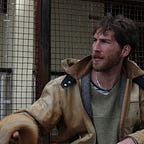NBA draft day shows how basketball is ruling the fashion game—and has been for ages
Keep trying football, baseball, hockey, and soccer
It’s not a fashion show, exactly, but there will be long, lithe frames decked out in Givenchy, Armani, and Yves Saint Laurent. The media will bring the same “hot or not” treatment leveled at movie stars on red carpets, and Vogue’s Prada-wearing devil, Anna Wintour, will keep an eye out for her next cover model.
But these are basketball players. And this is the 2016 NBA draft, held Thursday, June 23 at the Barclay’s Center in Brooklyn.
Style in basketball has had its up and downs, but since the 1970s the NBA has undeniably been the most fashion-forward of all the sports leagues. And a lot of the NBA’s sartorial authority is a result of the game’s proximity to America’s greatest trendsetter: urban black culture.
Basketball and urban fashion’s first pairing was the gaudy and flamboyant threads most associated with the blacksploitation films of the 1970s. Movies like Shaft and Super Fly dictated the style of the era and players like Julius ‘Dr. J’ Erving, Walt Frazier and the 7ft, fur-wearing Artis Gilmore helped popularize it off court. These players, flush with cash and celebrity, did not dress like the other popular trend informing black style at the time — the army garb, afros, and dreadlocks of the socialist Black Panther Party.
By the next decade, with player salaries consistently increasing, style in the league had gotten more corporate. While traveling to and from games on commercial airlines, most players wore suits that would largely fit in at a business lunch. “We wore sport coats to the airport and slacks. You didn’t have to put in a dress code,” said the Los Angeles Lakers’ Byron Scott. “We were pretty serious about how we dressed,” said Clyde Drexler of the Portland Trail Blazers. “I always had a personal tailor.”
This began to change in the 1990s, when Michael Jordan and Nike held sway. The shoe giant gambled big on the Jump Man, and athletic gear became a viable fashion choice off the court. During this era, the NBA draft also began to reflect the ostentatious couture of hip hop videos, in the form of oversized power suits — often in stand-out shades like purple and turquoise. These suits became so popular amongst basketball players that Antoine Walker, infamous for squandering over $100 million of his earnings, claimed he went broke because he bought too many custom suits for himself, his family, and his friends.
But the full hip-hop shift in basketball fashion came with the arrival of Allen Iverson. Throughout the early aughts, the diminutive Philadelphia point guard brought a style and swagger from the streets that many critics called “thuggish”: oversized T-shirts, do-rags, heavy gold chains and Timberland boots. NBA Commissioner David Stern was not a fan, afraid that Iverson’s influence would offend the white patrons of the NBA.
In November of 2004, Stern finally found a chance to shape the image of the NBA after a game in November of 2004 between the Detroit Pistons and the Indiana Pacers when the two teams brawled with fans in the stands of Detroit’s Palace of Auburn Hills. The “Malice at the Palace,” as it became known, put fear in the hearts of NBA shareholders. That season’s finals series between the Pistons and the San Antonio Spurs was watched by 29 percent fewer viewers than the previous year’s. Four months later, in October of 2005, Stern implemented a new dress code.
The dress code stipulated that players and personnel must wear: “a long- or short-sleeved dress shirt (collared or turtleneck), and/or a sweater”, sports jackets and blazers, “dress slacks, khaki pants, or dress jeans”, and appropriate “dress shoes, dress boots, or other presentable shoes” when embarking on NBA matters.
Many players took offense to these new rules, particularly Iverson. “They’re targeting my generation — the hip-hop generation. Just because you put a guy in a tuxedo, it doesn’t mean he’s a good guy. You can put a murderer in a suit, and he’s still a murderer,” Iverson said. But after one season and some fines, players mostly fell in line.
But they began to work within Stern’s dress code to convey their personal style — covering their bodies in tattoos, growing beards, and rocking statement hairstyles.
Overall, however, there’s been a shift back toward a more clean-cut, if sometimes whimsical look. Players like LeBron James began to get custom tailored suits from Milan. In April of 2008, James became the first black man to feature of on the cover of Vogue. This marked a change in the way fashion designers saw NBA bodies. Vogue editor-in-chief Anna Wintour began sitting courtside at basketball games, and players began to use injured time on the bench as a sort of stationary catwalk.
Today, the Oklahoma City Thunders’ Russell Westbrook is the reigning fashionisto of the league — known to some as the “Kate Moss of the NBA.” Commentators wait with glee to see what Westbrook wears as he arrives on game day, which can range from lenseless “nerd” glasses to a poncho paired with a wooden hat to whatever this is:
His style got him a deal with Barney’s New York, and other players have followed suit with similar sponsorships of their own. Steph Curry had a deal with Express. Lakers guard Nick Young and his former girlfriend, singer Iggy Azalea, modeled for Forever 21.
At this year’s draft, the Philadelphia 76ers have let the basketball world know that they will choose the 6-foot-10 Ben Simmons with their number-one pick. The 19-year-old Simmons has in turn let the fashion world know that his draft-day pick will be the Italian menswear couture house Brioni.
